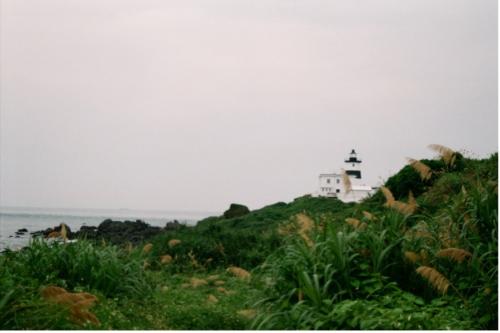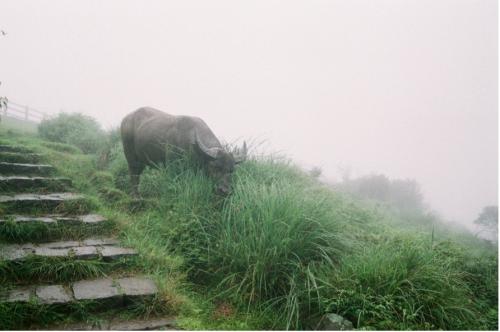
Summer 2023 Reflections: Jackson Herndon
by Jackson Herndon (EAS-MA candidate)
I’d like to use this post to share some of my experiences pursuing language study and research in Taiwan, an opportunity made possible due to APSI’s generous summer funding. As an MA student with PhD aspirations, the opportunity to continue to improve my Chinese language abilities through high-level language courses and further summer study was one of the initial motivations for applying to Duke. I’m glad to say that, after a year and a summer of classwork, I’ve improved dramatically.
Through APSI funding, I attended National Taiwan University’s International Chinese Language Program (ICLP) where I spent 5 hours daily in an immersive language environment and many more hours on review and homework.
ICLP’s strength isn’t just academic intensity; the unique atmosphere of the program, attended by many other students pursuing the academic study of Chinese and Taiwanese history and literature, really stands out. It’s hard to imagine too many other places where summer language students would organize their own Dream of the Red Chamber reading group, which we were able to read cover-to-cover by the end of the summer.
Being an ICLP student also means having access to NTU’s library, where I spent a considerable amount of time pursuing research relevant to my upcoming MA thesis. By the end of the all too brief summer I’d forged some genuine connections with my teachers at NTU, and I very much look forward to my next chance to return.
Outside of class, I spent some time pursuing my (fairly recent) film photography hobby, the results of which I’m sharing here as well.
Some of these photos were taken while traveling and hiking around during my free time, while others, particularly those of temples and religious sites, are intended to contribute to a friend’s ongoing project documenting popular religious activity in Taiwan.

These photos were taken at the fishing town of Fuji (富基) and nearby Laomei reef (老梅), the northmost point in Taiwan. As I strolled through the market every hawker did their best to pull me aside and coax me into choosing my meal from their particular menagerie of sea creatures—what you select is cooked and prepared immediately in the dining area outside the market!
Beyond the usual cast of sea creatures familiar to an American, Fuji offers mantis shrimp, abalone, cuttlefish, and much more. I ended up heading home full of fresh crab and ginger-oyster soup. Fugui lighthouse, originally erected in the Japanese colonial period, has been restored and is open to the public, only a short hike from the market.


These next two photos were taken in Tainan, outside the Confucian Temple (孔廟) and are maybe my personal favorites of the bunch. When I headed to Tainan, I was advised that the city is famed for two things: incredible food and an incalculable number of temples.

The Confucian Temple, one of the most renowned of the bunch, was founded by Zheng Jing, son of the pirate king Koxinga/Zheng Chenggong, and is one of the few remaining sites that still practices the traditional Confucian sacrificial rites.

The revelers and worshipers in this picture are tourists like me, but of a very different sort. They are on a pilgrimage from Danshui’s Cixiang Gong (慈祥宮) temple to the Queen Mother of the West (西王母), traveling to the Confucian Temple so as to parade their central altar figure through the city and make offerings. I was fortunate to visit the temple on the same day, and even more fortunate to be given permission to take these photos.

On the subject of temples, it’s hard to ignore how varied their locales can be. These photos depict Yinhe Dong temple (銀河洞) on Mount Maokong (貓空) and the Tainan City God temple (府城隍廟) respectively.

Yinhe Dong, dedicated to one of the Eight Daoist Immortals, is nestled under a waterfall a several mile hike into the depths of the mountains, while Tainan’s City God temple lies in the heart of a busy shopping district.

Last but not least, a photo of the author and an animal acquaintance. These photos were taken during a day-trek through Yangmingshan National Park (陽明山). During the late Qing Dynasty, the imperial court attempted to encourage Taiwanese farmers to water buffalo on the high mountain grasses of Yangmingshan. Two centuries later, their population continues to thrive in the wild, though thoroughly accustomed to the intrusions of hikers.

The author’s photo was taken in the ruins of a Japanese colonial period country mansion, now overgrown and left abandoned.